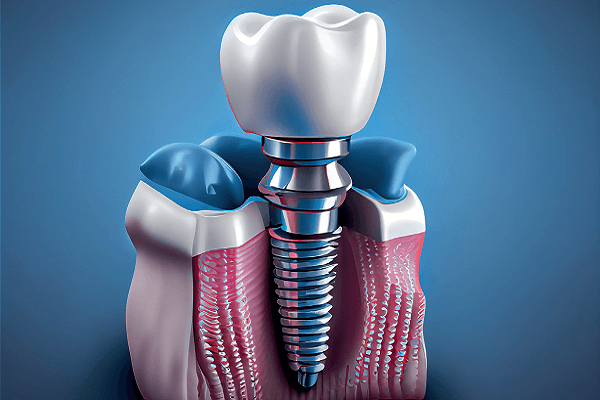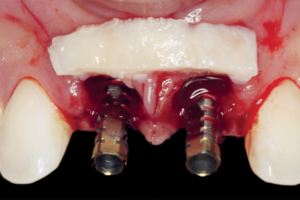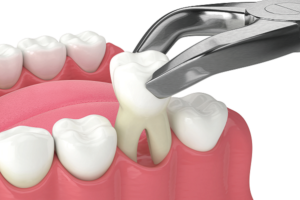AUTOR
Paulo Henrique Orlato Rossetti
Cirurgião-dentista, mestre e doutor em Reabilitação Oral – FOB-USP. Orcid: 0000-0002-0868-6022.
RESUMO
Objetivo: revisitar os momentos que nos trouxeram aos atuais protocolos de carga em Implantodontia. Material e métodos: uma busca foi realizada em mais de 20 periódicos científicos, acessados número por número, apenas no ano de 2003. Resultados: três artigos foram selecionados como os mais representativos desta época. O primeiro fazia uma revisão da literatura sobre o paradigma da mudança, estabelecendo que taxas de sucesso acima de 90% eram possíveis no protocolo de carga imediata, desde que alguns critérios fossem aplicados: uso de implantes em formato de parafuso para atingir estabilidade primária e melhorar a resistência ao cisalhamento nesta interface com o osso, implantes com roscas modificadas, seleção de uma superfície rugosa (benefício ainda a ser confirmado em osso macio), indeterminação da melhor relação comprimento/ diâmetro, cautela/aconselhamento sobre os riscos no tratamento de pacientes com bruxismo, esplintagem/ferulização dos implantes e a melhor distribuição das cargas oclusais entre dentes e implantes dentários. O segundo trazia a síntese do encontro realizado em Barcelona, na Espanha, em maio de 2002, estabelecendo uma divisão nítida entre os momentos para realização da carga imediata, precoce e tardia, os conceitos de carregamento oclusal e não oclusal, e o torque de inserção e frequência de ressonância como ferramentas diagnósticas. O terceiro explicava os conceitos revolucionários all-on-four, reduzindo significativamente o risco biomecânico e possibilitando a função imediata em duas horas. Conclusão: as novas fronteiras entre os protocolos de carga alteraram para sempre o fluxo de trabalho clínico, laboratorial e o relacionamento entre profissionais e pacientes, representando um grande salto na Implantodontia.
Palavras-chave – Carga precoce; Carga imediata; Carga tardia; Osseointegração.
ABSTRACT
Objective: to revisit the moments that brought us to the actual loading protocols in implant dentistry. Material and methods: a search was conducted in more than 20 scientific periodicals, accessed number by number, only at the year 2003. Results: three articles were selected as the most representative of this time. The first made a literature review on the paradigm changing, establishing that success rates over 90% were possible under the immediate loading protocol, since some criteria could applied: the use of screw-threaded fixtures to obtain primary stability and to improve the shear resistance at the bone interface, dental implants with modified threads, the selection of rough surfaces (benefits still to be confirmed on soft bone types), the lack of science over implant diameter/length selection in those situations, caution/ advising over the treatment risks for patients with bruxism, splinting and better occlusal load distribution over tooth and implants. The second was the synthesis of a meeting held in Barcelona, Spain, May 2002, which established a clear division over the timing for early, immediate and delayed protocols, as well as the concepts of occlusal and non-occlusal loading, and the use of final insertion torque and resonance frequency values as diagnostic tools. The third explained the all-on-four revolutionary concepts, which significantly reduced the biomechanical risks while still achieving immediate function up to two hours. Conclusion: those new frontiers regarding the loading protocols changed forever the clinical and laboratory workflows, and the professional-patient relationship as well, representing a great leap for the Implant Dentistry.
Key words – Early loading; Immediate loading; Delayed loading; Osseointegration.
Referências
- Albrektsson T, Zarb G, Worthington P, Eriksson AR. The long-term efficacy of currently used dental implants: a review and proposed criteria of success. Int J Oral Maxillofac Implants 1986;1(1):11-25.
- Brånemark PI. Osseointegration and its experimental background. J Prosthet Dent 1983;50(3):399-410.
- Szmukler-Mocler S, Piattelli A, Favero GA, Dubruille JH. Considerations preliminary to the application of early and immediate loading protocols in dental implantology. Clin Oral Implants Res 2000;11(1):12-25.
- Educated Guess | English meaning – Cambridge Dictionary [On-line]. Disponível em <https://dictionary.cambridge.org/dictionary/english/educated-guess>. Acesso em: 18-2-2023.
- Amsterdam M, Abrams L. Periodontal Prosthesis. In: Goldman HM, Cohen DW. Periodontal Therapy (5th ed.). St. Louis: C.V. Mosby, 1973. p.977-1083.
- Amsterdam M, Weisgold AS. Periodontal prosthesis: a 50-year perspective. Alpha Omegan 2000;93(Millennium Issue):23-30.
- Gapski R, Wang HL, Mascarenhas P, Lang NP. Critical review of immediate implant loading. Clin Oral Implants Res 2003;14(5):515-27.
- Aparicio C, Rangert B, Sennerby L. Immediate/early loading of dental implants: a report from the Sociedad Espanola de Implantes World Consensus Meeting in Barcelona, Spain, 2002. Clin Implant Dent Relat Res 2003;5(1):57-60.
- Malo P, Rangert B, Nobre M. “All-on-Four” immediate function concept with Brånemark System implants for completely edentulous mandibles: a retrospective study. Clin Implant Dent Relat Res 2003;5(suppl.1):2-9.
- Krekmanov L, Kahn M, Rangert B, Lindstrom H. Tilting of posterior mandibular and maxillary implants for improved prosthesis support. Int J Oral Maxillofac Implants 2000;15(3):405-14.
- Balshi TJ, Wolfinger GJ. Teeth in a day for the maxilla and mandible: a case report. Clin Implant Dent Relat Res 2003;5(1):11-6.
- Brånemark PI, Engstrand P, Ohrnell LO, Grondahl K, Nilsson P, Hagberg K et al. Brånemark Novum: a new treatment concept for rehabilitation of edentulous mandible. Preliminary results from a prospective clinical follow-up study. Clin Implant Dent Relat Res 1999;1(1):2-16.
- Jensen OT, Adams MW. All-on-4 treatment of highly atrophic mandible with mandibular V-4: report of 2 cases. J Oral Maxillofac Surg 2009;67(7):1503-9.
- Jensen OT, Adams MW. The maxillary M-4: a technical and biomechanical note for all-on-4 management of severe maxillary atrophy -report of 3 cases. J Oral Maxillofac Surg 2009;67(8):1739-44.
- Jensen OT, Adams MW, Cottam JR, Parel SM, Phillips WR 3rd. The all-on-4 shelf: maxilla. J Oral Maxillofac Surg 2010;68(10):2520-7.
- Jensen OT, Adams MW, Cottam JR, Parel SM, Phillips WR 3rd. The all-on-4 shelf: mandible. J Oral Maxillofac Surg 2011;69(1):175-81.
- Graves S, Mahler BA, Javid B, Armellini D, Jensen OT. Maxillary all-on-four therapy using angled implants: a 16-month clinical study of 1110 implants in 276 jaws. Oral Maxillofac Surg Clin North Am 2011;23(2):277-87.
- Butura CC, Galindo DF, Jensen OT. Mandibular all-on-four therapy using angled implants: a three-year clinical study of 857 implants in 219 jaws. Oral Maxillofac Surg Clin North Am 2011;23(2):289-300.
- Bidra AS, Agar JR. A classification system of patients for esthetic fixed implant-supported prostheses in the edentulous maxilla. Compend Contin Educ Dent 2010;31(5):366-8, 370,372-4 passim.
- Papadimitrou DEV, Salari S, Gannam C, Gallucci G, Friedland B. Implant-prosthodontic classification of the edentulous jaw for treatment planning with fixed rehabilitations. Int J Prosthodont 2014;27(4):320-7.
- Monje A, Ravidà A, Wang HL, Helms JA, Brunski JB. Relationship between primary/mechanical and secondary/biological implant stability. Int J Oral Maxillofac Implants 2019;34:s7-s23.





